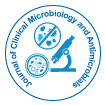

Perspective - (2024)Volume 8, Issue 3
Fungal infections, though often overlooked compared to bacterial or viral infections, are a growing concern in immunocompromised patients. Among the wide variety of fungal pathogens, Myrothecium, a genus of fungi, has been identified as a rare but significant pathogen in this vulnerable population. Although Myrothecium species are generally considered saprophytic fungi in the environment, they can occasionally cause infections in individuals with weakened immune systems. This study examines the characteristics of Myrothecium as a pathogen, its clinical significance in immunocompromised patients, diagnostic challenges, treatment options and the need for further research in this area.
Role of Myrothecium as an opportunistic pathogen
Myrothecium is a genus of fungi that is commonly found in soil, decaying plant matter, and other environmental substrates. The genus is primarily known for its saprophytic nature, playing a role in the decomposition of organic matter. However, some species of Myrothecium have been recognized as opportunistic pathogens, particularly in individuals with compromised immune systems. The most commonly studied species within this genus include Myrothecium roridum and Myrothecium verrucaria, which have been associated with various clinical infections. While Myrothecium species are not considered common pathogens, they have been documented in clinical cases involving immunocompromised patients. Immunocompromised individuals, such as those undergoing chemotherapy, organ transplant recipients, or people living with HIV/AIDS, are particularly vulnerable to opportunistic infections. These patients have weakened immune defenses, making it easier for pathogens like Myrothecium to establish infections. Infections caused by Myrothecium are rare but significant due to their potential to cause severe and often difficult-to-treat diseases. These infections can range from localized skin and soft tissue infections to more severe systemic infections affecting internal organs. The manifestations of Myrothecium infections depend on the patient’s immune status, the site of infection, and the pathogenicity of the species involved.
Clinical manifestations of Myrothecium infections
The clinical presentation of Myrothecium infections can vary, but common manifestations include:
Skin infections: Myrothecium is most frequently associated with cutaneous infections in immunocompromised patients, often presenting as localized lesions or abscesses. These infections can occur after direct exposure to contaminated soil or plant material, or following surgery or trauma.
Systemic infections: In more severe cases, Myrothecium can cause disseminated infections affecting multiple organs, including the lungs, liver and kidneys. Symptoms may include fever, chills, malaise and organ dysfunction. In these cases, the infection can rapidly progress, leading to sepsis, septic shock and organ failure if not promptly diagnosed and treated.
Pulmonary infections: In immunocompromised patients, Myrothecium can also invade the respiratory system, causing pneumonia-like symptoms. These infections can present with cough, shortness of breath and chest pain, often complicated by secondary bacterial or fungal infections.
Diagnosis of Myrothecium infections
Diagnosing Myrothecium infections can be challenging due to the rarity of the pathogen and the nonspecific nature of its clinical manifestations. The process generally involves a combination of microbiological, molecular, and clinical diagnostic techniques. The first step in diagnosing a Myrothecium infection is the collection of clinical samples from the site of infection, such as skin lesions, blood, sputum or tissue biopsy. The samples are then subjected to microscopic examination, where fungal elements such as hyphae or conidia (spores) may be observed. Culture is typically performed on Sabouraud dextrose agar or other selective media for fungi. In the case of Myrothecium, growth on these media will typically produce colonies with distinctive morphology, including velvety or cotton-like textures. Identifying the genus and species of the fungus is essential for determining appropriate treatment options. In some cases, particularly in systemic infections, a tissue biopsy may be necessary. Histopathological examination of infected tissue can reveal characteristic fungal elements, such as septate hyphae or conidia, embedded in the tissue, confirming the diagnosis of fungal infection. Myrothecium is a rare but significant fungal pathogen in immunocompromised patients. While these infections are uncommon, they can be severe and challenging to treat. Early diagnosis through microbiological, molecular, and histopathological techniques is important for improving patient outcomes. Treatment typically involves antifungal agents, with the choice of therapy depending on the severity of the infection and the antifungal susceptibility of the organism. As the prevalence of immunocompromised individual’s increases, further research into the pathogenicity of Myrothecium, its antifungal susceptibility and potential treatment strategies is essential for advancing clinical care and improving patient survival rates.
Citation: Patel A (2024) Myrothecium: A Rare Fungal Pathogen in Immunocompromised Patients. J Clin Microbiol Antimicrob. 8: 203.
Received: 26-Aug-2024, Manuscript No. JCMA-24-35605 ; Editor assigned: 28-Aug-2024, Pre QC No. JCMA-24-35605 (PQ); Reviewed: 11-Sep-2024, QC No. JCMA-24-35605 ; Revised: 18-Sep-2024, Manuscript No. JCMA-24-35605 (R); Published: 27-Sep-2024 , DOI: 10.35248/ JCMA. 24.8.203
Copyright: © 2024 Patel A. This is an open-access article distributed under the terms of the Creative Commons Attribution License, which permits unrestricted use, distribution, and reproduction in any medium, provided the original author and source are credited.